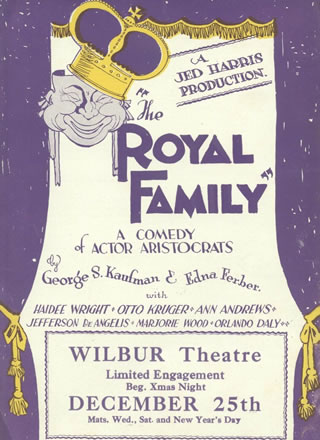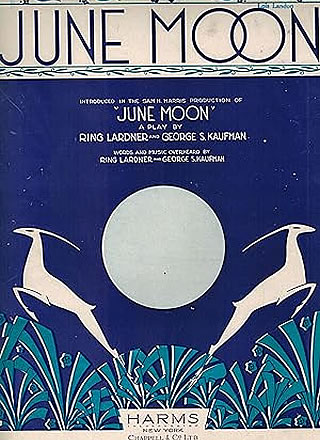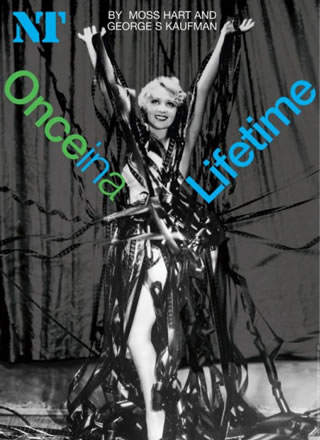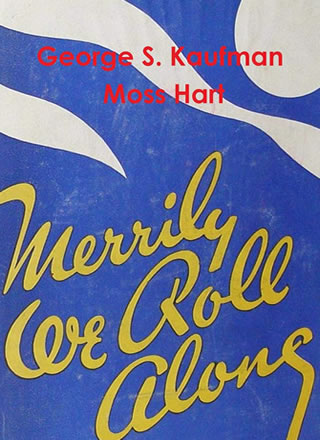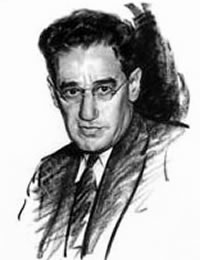Animal Crackers
(1928)
By George S. Kaufman and Morrie Ryskind
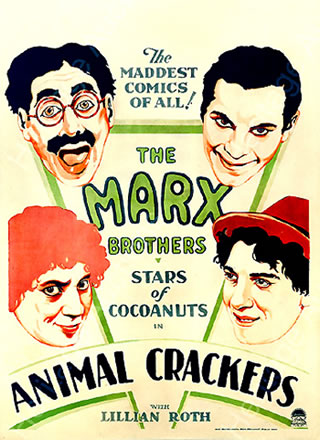
Music and Lyrics by Bert Kalmar and Harry Ruby
Cast size: 16 men, 10 women
After the success of the 1925 stage vehicle for the Marx Brothers, The Cocoanuts, Kaufman was pressed into service again (somewhat against his will), along with co-librettist Morrie Ryskind and songwriting team Bert Kalmar and Harry Ruby, all of whom would continue to work with the Marx Brothers in years to come.
For performance rights, contact: Concord Theatricals

Table of Contents
The Plot
What, are you kidding me?
The scene is the Long Island estate of Mrs. Rittenhouse, a wealthy patroness of the arts with a marriageable daughter. Her celebrity weekend guest is the renowned Captain Jeffrey Spaulding, the African Explorer (Groucho). He arrives (“Hooray, hooray, hooray!”) with his secretary, Horatio Jameson (Zeppo), followed by pair of “musicians”: Ravelli (Chico) and the Professor (Harpo).
What follows is typical Marxian lunacy, involving a stolen painting, a surreal bridge game, a Broadway gossip columnist named Wally Winston, a financial wizard formerly known as Abie the Fish Peddler, and a climatic burlesque of Marie Antoinette and Three Musketeers. What transcends this errant nonsense are the verbal arabesques of Captain Spaulding
“Last night, I shot an elephant in my pyjamas. How he got into my pyjamas, I’ll never know.”
and the first-rate, skirt-chasing slapstick of Ravelli and the Professor.
About the Play
 After the success of the 1925 stage vehicle for the Marx Brothers, The Cocoanuts, Kaufman was pressed into service again (somewhat against his will), along with co-librettist Morrie Ryskind and songwriting team Bert Kalmar and Harry Ruby, all of whom would continue to work with the Marx Brothers in years to come. By now, the former vaudeville team was a starring attraction of the Great White Way, something unimaginable–except perhaps by their mother, Minnie–only a decade earlier. Animal Crackers became a watershed show for them in many respects.
After the success of the 1925 stage vehicle for the Marx Brothers, The Cocoanuts, Kaufman was pressed into service again (somewhat against his will), along with co-librettist Morrie Ryskind and songwriting team Bert Kalmar and Harry Ruby, all of whom would continue to work with the Marx Brothers in years to come. By now, the former vaudeville team was a starring attraction of the Great White Way, something unimaginable–except perhaps by their mother, Minnie–only a decade earlier. Animal Crackers became a watershed show for them in many respects.
Although it ran fewer performances than The Cocoanuts, it was still a hit (these were the days when anything over 100 performances was successful and the 1928-29 season had 225 productions). It revealed many more inside topical jokes than any other of their shows. For example, Wally Winston is clearly modelled on Walter Winchell (a fan of the Marxes) and Groucho repeatedly parodies Eugene O’Neill‘s psychological behemoth Strange Interlude, which won the Pulitzer Prize in 1928, with its garrulous stream-of-consciousness asides (Kaufman thought O’Neill a bore).
“Hooray for Captain Spaulding” became Groucho’s theme song, long into the next five decades. During the show’s road tour, the stock market crashed, practically ruining Groucho; that night, he began reciting precipitous stock quotations in the middle of a monologue.
Most important, during the run of Animal Crackers, the four brothers were commuting daily to Astoria, Queens, where they were filming their first real film, a version of The Cocoanuts. Another Marxian paradox: that a team with a silent partner became a natural for sound films, just introduced in 1927. Soon after the tour of Animal Crackers, the Marx Brothers filmed that show in Astoria, for a 1930 release.
Hollywood beckoned, as well as sunshine and a chance to rebuild their finances after the Crash, and like their fellow vaudevillians W.C. Fields, Mae West, and Eddie Cantor, the Marx Brothers left–never to return. Broadway’s loss was Hollywood’s gain, but critic Brooks Atkinson once wrote that:
“[I]nside the boxlike structure of the Broadway stage, the buffoonery of the Marx Brothers was explosive.”
Stage history
After a Philadelphia tryout, Animal Crackers opened on October 23, 1928 at the 44th Street Theater, and it ran 191 performances. The Marx Brothers toured the show for a year before committing it to film for a 1930 Paramount release. The film was revised somewhat by Ryskind and eliminates more than half of the amusing Kalmar/Ruby score (although it does maintain many of other leading actors, including the inestimable Margaret Dumont as Mrs. Rittenhouse).
The show was kept off the boards until 1982, when director Douglas C. Wager revived the play at Washington’s Arena Stage, while adding back much of the score and new dialogue from the film version. The new revision was a great success, playing at other regional theaters across the country, and Wager revived the show again at Arena in 2000, where it won the Helen Hayes Award for Best Production of a Musical. This version is printed and licensed by Samuel French; the complete text of the original musical is available in Kaufman & Co., published by the Library of America.
Other Plays in the Catalogue
By Moss Hart and George S. Kaufman. Cast size: 20 men, 19 women, plus extras; 5 sets. Once in a Lifetime opened at the Music Box Theatre on September 24, 1930 and ran for 305 performances.
Minick is a three-act Broadway play written by Edna Ferber and George S. Kaufman, based on Ferber's 1922 short story "Old Man Minick", that opened on September 24, 1924.
The play opened at the Music Box Theater on September 29, 1934; it was largest non-musical play to run there (155 performances). With its nine separate scenes and cast of 91 actors, it was impractical to tour the play, either before or after its Broadway opening.
Table of Contents
Contact Us Today
Interested in bringing George S. Kaufman’s timeless plays to your stage?
Please refer to the contact information for each specific play on the various collection pages for direct amateur and professional licensing information.
Plays are represented by Concord Theatricals, Broadway Dramatic Licensing, and Music Theatre International respectively
If you are interested in first-class performance or film/television rights:
In the US, George S. Kaufman’s plays are represented by:
CPK Artists, LLC
In the UK, George S. Kaufman’s plays are represented by:
Alan Brodie Representation
For more information about George S. Kaufman or this website, contact:
Laurence Maslon
Literary Trustee, George S. Kaufman Estate


